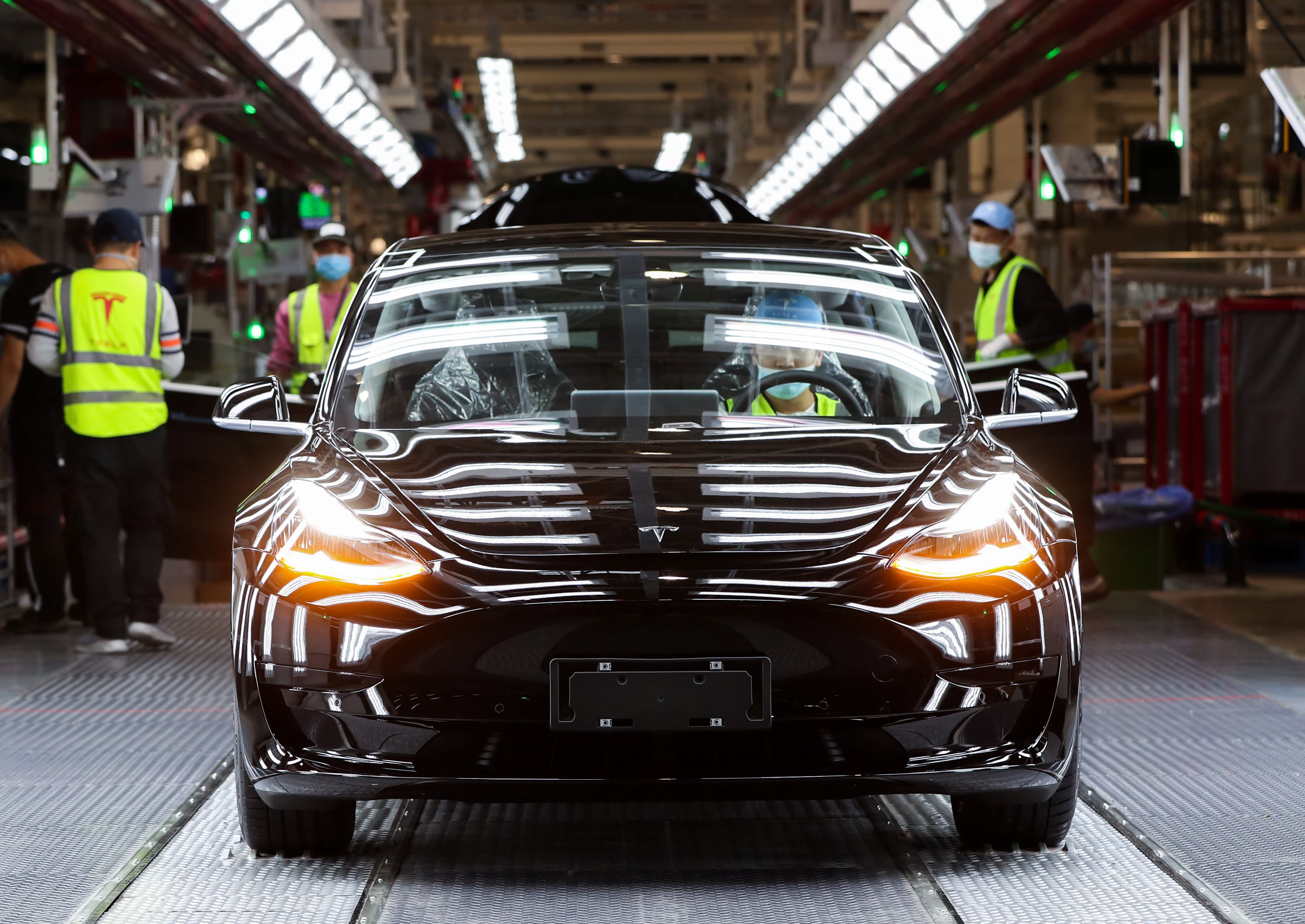
Tesla said Saturday that it delivered 180,570 electric vehicles in the fourth quarter, beating its previous record as well as Wall Street expectations. The electric automaker produced 179,757 vehicles total.
For the year, Tesla delivered 499,550 vehicles in 2020, slightly missing its most recent guidance of 500,000 vehicles.
At an annual shareholder meeting earlier this year, CEO Elon Musk told shareholders he expected deliveries to hit an implied range between 477,750 and 514,500 cars for 2020, despite the impacts of the coronavirus pandemic.
The Q4 numbers represent a new record for Musk’s auto business, which set its previous best in the third quarter of 2020 with deliveries reaching 139,300 then.
As of Thursday, Wall Street expected Tesla to report fourth-quarter deliveries of 174,000 vehicles over the last three months, according to a consensus of analysts surveyed by FactSet. Estimates ranged from 151,000 at the low end to 184,000 at the high end, and included forecasts published between October and mid-December.
In the fourth quarter, Tesla delivered 161,650 Model 3 and Model Y cars and produced 163,660 such vehicles. The automaker also delivered 18,920 Model S and X vehicles and produced 16,097 of them.
For the year, Tesla delivered 442,511 Model 3 and Model Y cars, while producing 454,932 of the vehicles. It delivered 57,039 Model S and Model X cars, while producing 54,805 such vehicles.
In its quarterly reports, Tesla does not break out delivery and production numbers by region. Tesla also combines delivery numbers for its older Model S and Model X electric cars, and newer, more popular Model 3 and Model Y vehicles.
However, Tesla observers can glean some understanding of these segments from Light Vehicle Production reports published by the U.S. National Highway Traffic Safety Administration (NHTSA).
Auto manufacturers are required to report the number of vehicles they produced for sale in the U.S. to NHTSA per quarter. The production numbers refer to the make, model, model year and propulsion system of a given vehicle that any auto manufacturer produces for the U.S. market through the end of each quarter.
According to these reports, analyzed by CNBC, In the first nine months of 2020, Tesla made 66,175 of its 2020 Model 3 electric sedans and 46,773 of its 2020 Model Y crossover SUVs for the domestic U.S. market alone.
By the third quarter of the year, Tesla was making more 2020 Model Ys than 2020 Model 3s for US drivers.Tesla began producing its 2020 Model Y crossover SUV in serious volumes in the first quarter of 2020.
The NHTSA Light Vehicle Production reports indicate that Tesla only made 119 of its 2020 Model Ys in the fourth quarter of 2019 for sale in the US market– but it made 29,216 of its 2020 Model Ys for customers here in the third quarter alone. That compares to 28,071 2020 Model 3s in the first quarter, and 22,667 of its 2020 Model 3s in the third quarter for the U.S. market.
(Before publication, NHTSA had not published Q4 U.S. production numbers for Tesla.)
Throughout 2020 Tesla was able to increase vehicle production and deliveries by ramping up Model Y production, successfully operating a new car plant in Shanghai, and bringing on new battery cell suppliers (alongside its longstanding partner Panasonic) to make more of the high voltage battery packs that power its electric cars.
Tesla said, on Saturday, that Model Y production has begun in Shanghai with deliveries of the Made In China Model Y expected to commence shortly.
Musk has proclaimed that he wants to increase Tesla’s vehicle sales volume from about 500,000 in 2020 to 20 million annually over the next decade with plans for an electric vehicle that costs $ 25,000, its Cybertruck, Semi and revamped Roadster in the works.
After Tesla’s Model S reveal brought in higher than anticipated pre-orders in 2016, Musk said the company aimed to produce 500,000 cars per year at the Fremont plant by the end of 2018. He also said that Tesla would produce 800,000 to 1 million cars per year at Fremont by 2020 then, reiterating the goal in 2018 with a slight hedge saying it could look more like 700,000 to 800,000 per year in Fremont. The company hasn’t apparently hit that goal yet in California.
But looking ahead to 2021, Tesla is building new factories in Austin, Texas and Brandenburg, Germany, among other efforts to grow its production and sales volume. Musk cautioned shareholders on the company’s last earnings call that it could take 12 to 24 months to hit full capacity at new factories after they begin operations — significantly slower than what Tesla achieved in Shanghai.
As Tesla faces a greater number of competitors the world over, in luxury and lower priced segments, IHS Markit forecasts electric vehicle sales will represent 10.2%, or 9.4 million, of the nearly 92.3 million vehicles it expects to sell globally in 2024.
Correction: Tesla slightly missed its target for annual deliveries, and the car company produced 179,757 vehicles total in the fourth quarter. A previous version of this story misstated the annual target and the Q4 production numbers due to editing errors.






